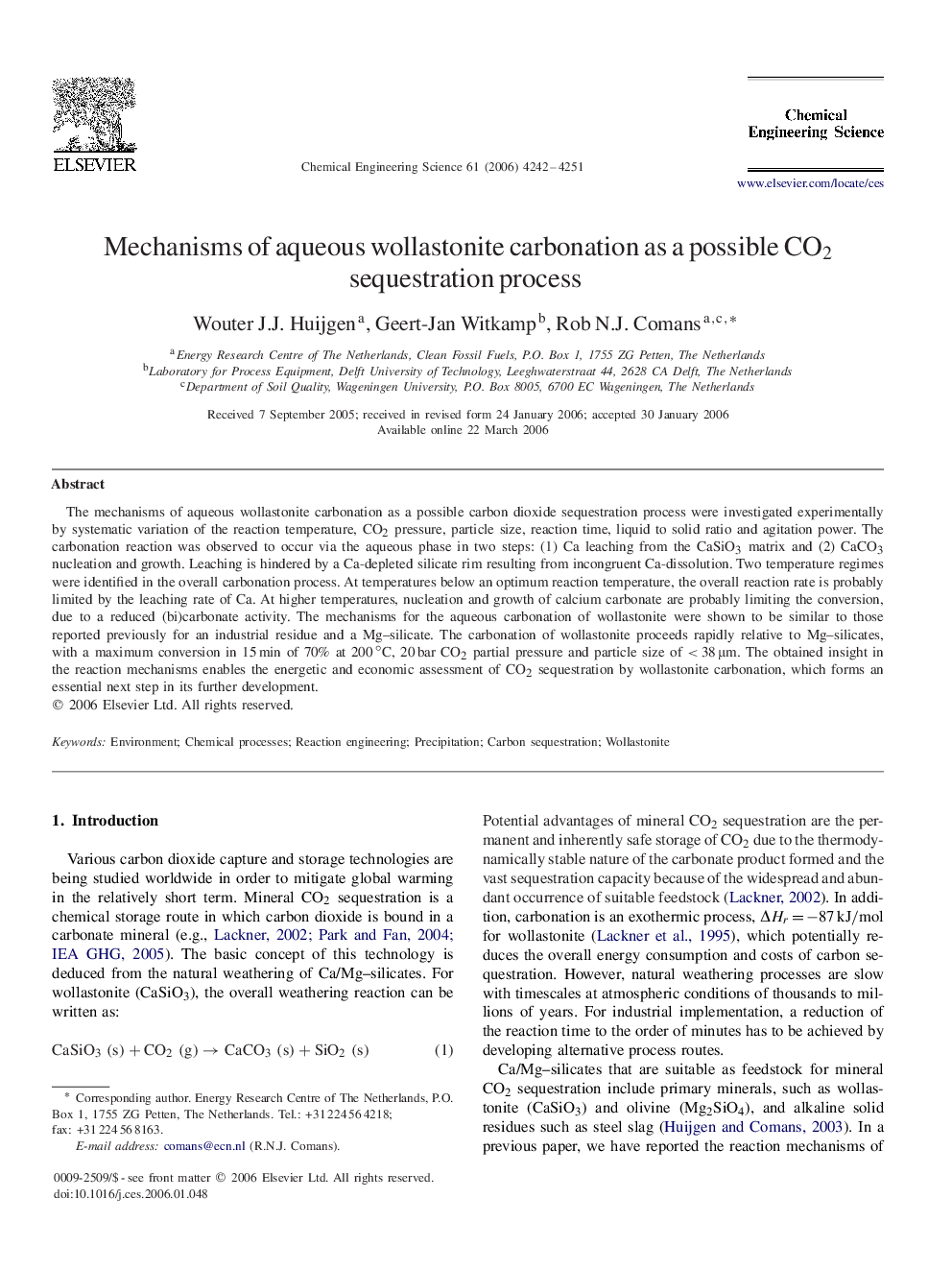| Article ID | Journal | Published Year | Pages | File Type |
|---|---|---|---|---|
| 159691 | Chemical Engineering Science | 2006 | 10 Pages |
The mechanisms of aqueous wollastonite carbonation as a possible carbon dioxide sequestration process were investigated experimentally by systematic variation of the reaction temperature, CO2 pressure, particle size, reaction time, liquid to solid ratio and agitation power. The carbonation reaction was observed to occur via the aqueous phase in two steps: (1) Ca leaching from the CaSiO3 matrix and (2) CaCO3 nucleation and growth. Leaching is hindered by a Ca-depleted silicate rim resulting from incongruent Ca-dissolution. Two temperature regimes were identified in the overall carbonation process. At temperatures below an optimum reaction temperature, the overall reaction rate is probably limited by the leaching rate of Ca. At higher temperatures, nucleation and growth of calcium carbonate are probably limiting the conversion, due to a reduced (bi)carbonate activity. The mechanisms for the aqueous carbonation of wollastonite were shown to be similar to those reported previously for an industrial residue and a Mg–silicate. The carbonation of wollastonite proceeds rapidly relative to Mg–silicates, with a maximum conversion in 15 min of 70% at 200∘C, 20 bar CO2 partial pressure and particle size of <38μm. The obtained insight in the reaction mechanisms enables the energetic and economic assessment of CO2 sequestration by wollastonite carbonation, which forms an essential next step in its further development.
